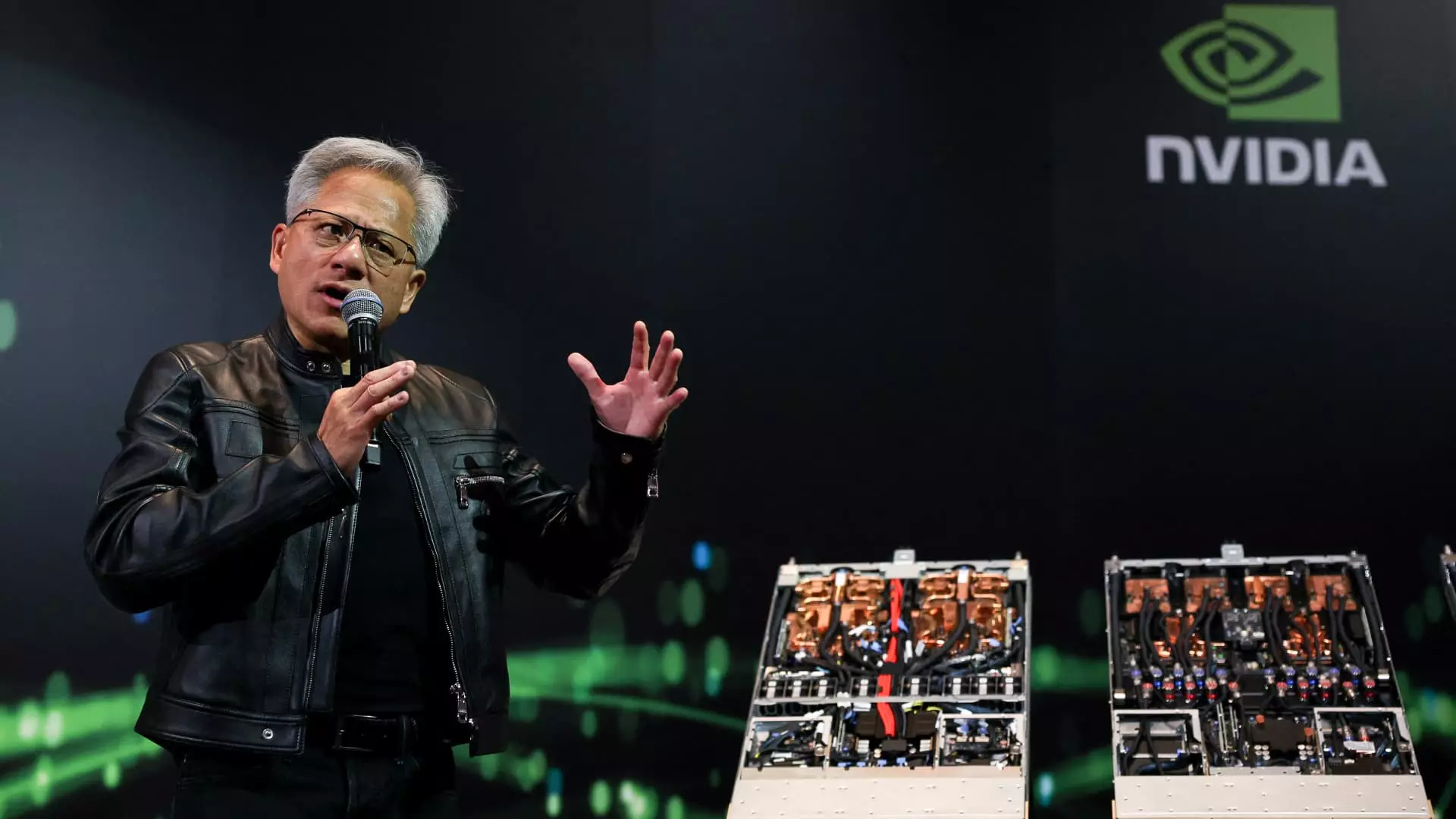Nvidia, the quintessential giant in the semiconductor industry, has been riding high on the waves of unprecedented demand for graphics processors, primarily fueled by a blossoming artificial intelligence (AI) sector. However, as the company approaches its earnings report, the narrative has shifted from booming growth potential to looming uncertainties anchored largely in geopolitical tensions, particularly regarding China. This shift highlights a critical inflection point for Nvidia, as it grapples with market pressures and regulatory challenges that threaten not only its revenues but also its long-term market dominance.
The buzz around Nvidia’s chips had been fervent, with projections hinting at sky-high revenue boosts driven by the increased adoption of AI technologies across various industries. Analysts had anticipated that the company would deliver impressive results—growth reportedly edging towards 66% for the last quarter, amounting to a staggering $43.28 billion in revenue. Yet the optimism surrounding these figures has been marred by the stark realization of the potential financial ramifications stemming from recent government directives.
The China Quandary: Geopolitical Tension and Technological Competition
A significant catalyst for this tumultuous shift can be traced back to the stricter export license requirements imposed by the U.S. government specifically aimed at curbing Nvidia’s access to the Chinese market. Since the Trump administration first enacted these measures, they have only intensified under President Biden, as the U.S. expresses heightened concerns regarding the potential military uses of AI technologies. Consequently, Nvidia was forced into a staggering $5.5 billion write-down on its inventory, a record low in a sector typically characterized by resilience.
One cannot understate the depth of this write-down, which reflects an anticipated revenue hit of around $15 billion tied to the H20 processor aimed at Chinese customers. This event serves as a hypnotic siren illustrating the precarious nature of technological competition as companies navigate the inextricable ties between commercial success and national security concerns. Moreover, Nvidia’s narrative intertwines with broader themes of economic protectionism that have recently permeated global politics, raising significant concerns about future growth prospects.
Moreover, Nvidia’s ability to influence AI technology is now undermined by competition from its Chinese counterparts. In a recent statement, Nvidia CEO Jensen Huang pointed out that the company’s once-dominant market share in China—boasting 95%—has plummeted to just 50% due to these regulatory constraints. This sharp decline signals not only a potential loss of revenue for Nvidia but a broader erosion of its technological advantage. As the landscape evolves, it is evident that the very restrictions implemented to maintain U.S. dominance could inadvertently catalyze the rise of an indigenous Chinese semiconductor industry.
Trying to Navigate Regulatory Responses
Nvidia has seen a glimmer of hope with the recent announcement from the Trump administration that it would rescind the “AI diffusion rule,” which had threatened to impose even stricter export controls. However, this tactical retreat does not resolve the looming uncertainties for Nvidia. The administration’s decision to reformulate these regulations hints at an ongoing tug-of-war between the ambitious aspirations of companies like Nvidia and the cumbersome web of compliance that government oversight can impose.
Morgan Stanley analysts have astutely highlighted the need for Nvidia to address these persistent regulatory questions in forthcoming communications, falling just short of offering investors the kind of clarity they crave. The anticipation leading up to Nvidia’s upcoming earnings report hangs heavily on investors’ minds—it could either solidify confidence in the company’s future or roundly illuminate its vulnerabilities. With a significant portion of its business aimed at the Chinese market, there lies a palpable tension between upholding national security interests and ensuring the dynamic growth of the U.S. tech sector.
The Quest for Technological Leadership
What remains clear is that Nvidia’s efforts to navigate a future replete with uncertainty will place tremendous pressure not just on its executives but the entire technology sector to be innovative and adaptive. The prospect that engineers in China may rise to the occasion and develop home-grown chips as a response to current export limitations raises a challenging question about the U.S.’s long-term position as a leader in AI technology.
The intricacies woven into this narrative challenge the conventional wisdom surrounding what constitutes competitive advantage in the tech world. As geopolitics redefines the rules of engagement, Nvidia’s journey toward safeguarding its interests while pushing the boundaries of artificial intelligence innovation will be scrutinized in the months ahead, leaving stakeholders to ponder a more complex tableau in the global technology landscape. The combination of remarkable potential paired with formidable obstacles illustrates that the battle for market supremacy is no longer solely defined by financial metrics but rather by strategic adaptability and foresight in uncertain times.

